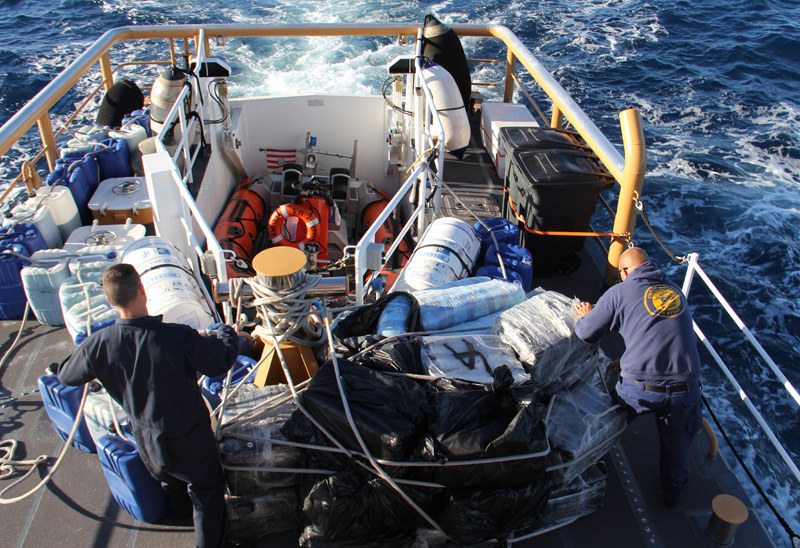
Brazen Smuggling Techniques

For decades we’ve read about the many inventive ways that drugs are smuggled, but lately some crime organizations have been undeniably brazen in their efforts to bring dope to market in the US. In several recent incidents, large, open pangas — built in Mexico for offshore fishing — have been intercepted off the Northern California coast by Coast Guard assets. Apparently the trend is growing, despite the overt nature of the technique — basically, they barrel north at high speeds with the illicit cargo simply piled to the pangas’ gunwales.
As these alleged smugglers learned, once the Coast Guard has you in their sights, it’s tough to outrun or outgun them.
In addition to the seizure pictured above, an abandoned panga believed to have been used for smuggling was recently found in Monterey Bay after a failed attempt to scuttle it. And as we were reminded by a recent CG press release: "In December 2012, a Coast Guardsman was killed by suspected smugglers when they rammed a CG vessel with their panga. In addition, the pangas often carry large amounts of fuel for their transit up the coast and, once the smugglers complete their transit, they abandoned the vessels, leaving the remaining fuel to the mercy of the environment, needlessly exposing the community to dangerous health risks." The release also pointed out that, "The money earned from smuggling, and the illegal activities related to it, have been cited as a destabilizing influence in Mexico and causes tremendous harm to communities on both sides of the border."
To augment their own surveillance efforts, the Coast Guard is asking boaters and coastal residents to "remain vigilant and to immediately notify authorities if they observe any suspicious vessels or activities along the coast, in port, or at sea." Suspicious maritime activity can be reported by calling 911. Or call the Department of Homeland Security Tip Line at (415) 426-8815. These calls are confidential, and tipsters can remain anonymous if they choose.
